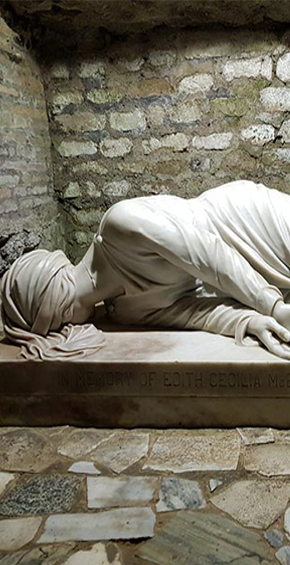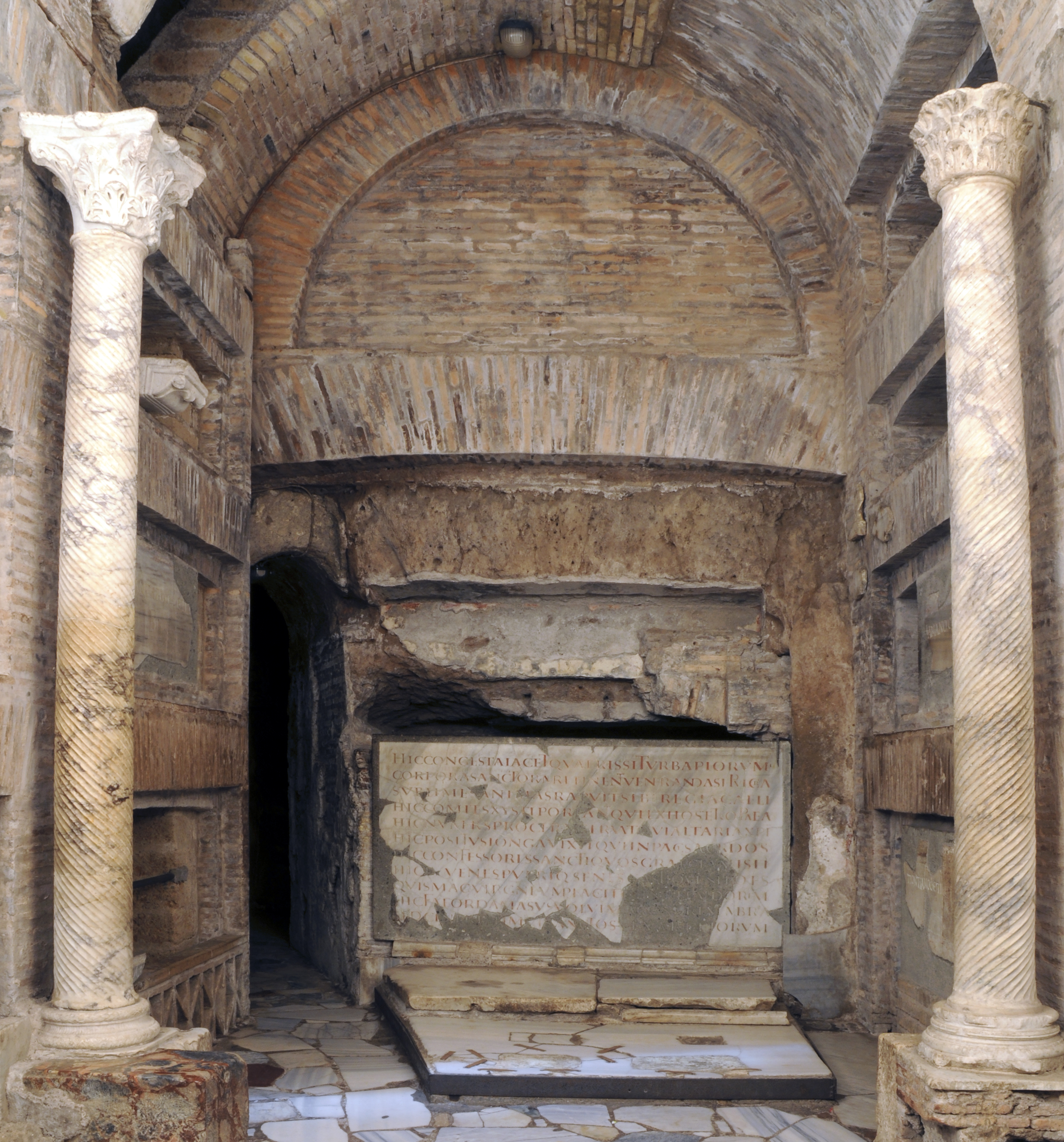The catacombs are underground areas that were born between the end of the second and the beginning of the third century AD, used for the burial and funeral commemoration of the members of the Christian community.
These burial grounds were dug mainly in the tuff and in the pozzolana, as well as in other types of soil characterized by ease of processing and great resistance, such as to guarantee the creation of complex systems of tunnels and cubicles structured on different floors.
Some of these rooms are richly decorated, others have housed the tombs of the martyrs who during the Middle Ages attracted the devotion of numerous pilgrims.
The Catacomb of S. Callisto extends between the Via Appia Antica and the Via Ardeatina and is, according to sources, the oldest official cemetery of the Christian community in Rome.
The complex takes its name from the deacon Callisto who, under Pope Zephyrinus (199-217), was in charge of the administration of the cemetery and who, having become pope (217-222), greatly enlarged it.
The cemetery complex is spread over five floors in some points and its galleries have a development of over 10 kilometers.
In 1854 the archaeologist Giovanni Battista de Rossi discovered the crypt of the popes, which housed the burials of the popes who reigned between 230 and 283. Nine popes and three bishops were buried in this tomb. In a contiguous environment is the burial of St. Cecilia, a Roman matron who tradition remembers as the one who took care to give a worthy burial to so many Roman martyrs.
One of the oldest nuclei of the cemetery complex is the crypt of Lucina, where Pope Cornelius was buried, who died a martyr in 253. In a nearby cubicle there are some of the oldest frescoes in the Roman catacombs (late 2nd - early 3rd century) : on the ceiling a Good Shepherd with prayers and, on the back wall, two fish with a basket of bread on the back, symbol of the Eucharist.
Another ancient region is the so-called "Area I" where the cubicles "of the sacraments" are located, because the subjects of the paintings that decorate them were once thought to allude to Baptism and the Eucharist.
Full tickets € 12,00 (Ticket € 10,00 + Booking fee € 2,00)
Reduced tickets € 9,00 (Ticket € 7,00 + Booking fee € 2,00)
Free tickets
Languages available for guided tours: Italian, English, French, Spanish, German.
For others entrance times, languages and available days please write to info@omniavaticanrome.org
SAINT CALLIXTUS
Address: Via Appia Antica, 110
From Termini Station:

Our commitment is to offer pilgrims and visitors, through the catacombs, an experience of communion with the testimonies of the first Christian communities, which tell and illustrate, in an extremely suggestive way, the roots of faith and the horizon of Christian hope.
Mons. Pasquale Iacobone
President of the Pontifical Commission for Sacred Archaeology

The crypt of the popes is a rectangular room illuminated by a large skylight, with niches and niches for sarcophagi obtained in the side walls.
On the back wall a marble slab, recomposed by the archaeologist Giovanni Battista de Rossi, bears a poem composed by Pope Damasus (366-384) in honor of the bishops placed in the catacomb.
The cubicles "of the sacraments" contain paintings dated to the first half of the third century, which represent scenes of the prophet Jonah, the healing of the paralytic, the resurrection of Lazarus, the baptism of Jesus and banquet scenes.
Also richly decorated are the faced cubicles of Pope Miltiades and the Seasons, with representations that reflect the characteristic themes of the most ancient Roman paintings.
Two more cubicles retain the burials of two other popes, Gaius and Eusebius. In the latter's tomb you can see the monumental inscribed slab that Pope Damasus dedicated to him.
hide